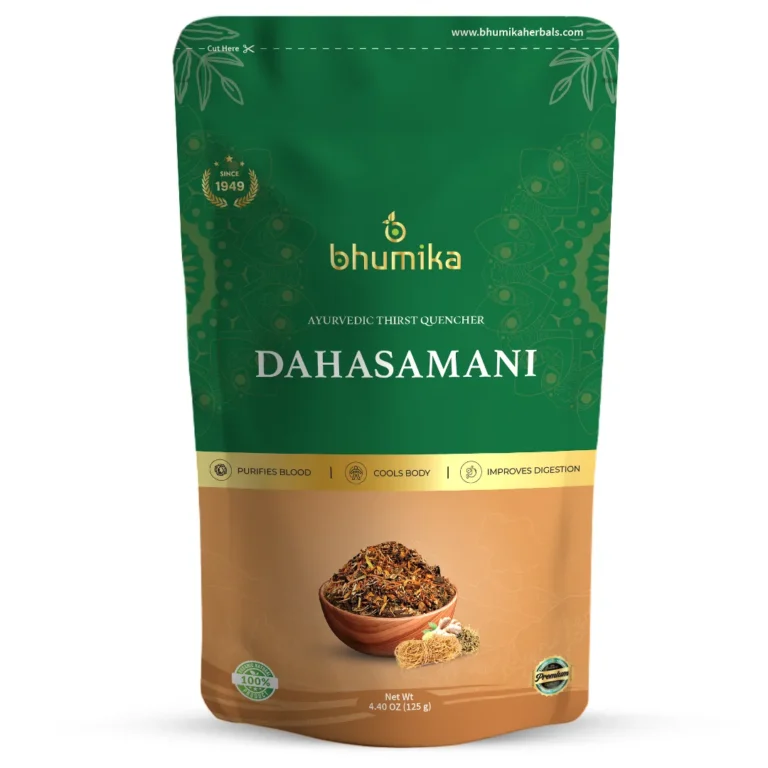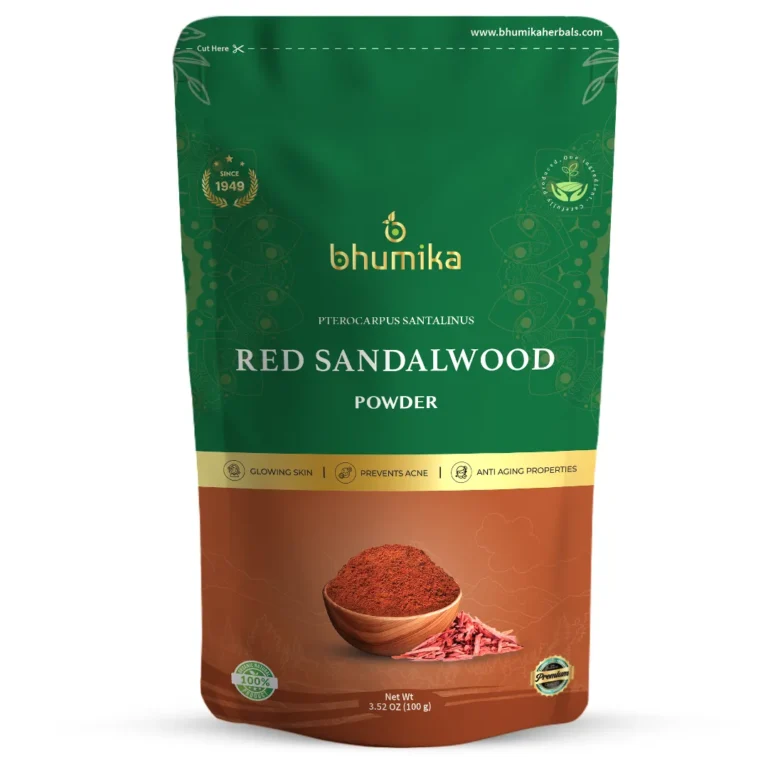How to Know Your Skin Type Naturally – Simple Home Tests
Share this!
If you have a misbelief that a skincare product that works perfectly for someone you know will also offer you the same results, then you are mistaken. The answer is simple: your skin type might be different from that of the other person who used the same product. Knowing your exact skin type will help you choose the right products, ingredients, and routine that suit your skin’s unique needs.
Whether your skin is normal, oily, dry, sensitive, or combination, each type needs a special skincare routine to stay healthy and balanced. Continue reading this article to learn how to know your skin type and what your skin needs, which will help you enjoy naturally glowing, beautiful skin every day.
| Table of Contents: |
Why It’s Important to Know Your Skin Type?
Before we learn how to check your skin type naturally, first, we should understand the importance of knowing your skin type. It will help you choose the right skincare products, avoid irritation, and maintain healthy, glowing skin.
- Personalised skincare routine: The skincare routine for each skin type will be different. For example, dry skin will need nourishing oils and rich moisturisers, while oily or acne-prone skin will benefit from lightweight, oil-free formulas.
- Prevents skin problems: Understanding your skin type will help you avoid using any unsuitable products that can cause breakouts, redness, or irritation. By choosing the right products for your skin, you can protect its natural balance and prevent any issues before they start.
- Saves time and money: Once you know your skin type, you need not waste money experimenting with random skincare products. Investing in the ones that work for your skin will help keep your skincare routine simple and make it more affordable in the long run.
Different Types of Skin
A basic understanding of the various types of skin can help you choose the right products, enabling you to follow a proper skin care routine for healthy, balanced skin. These are the common skin types:
Oily Skin
Oily skin produces excess sebum, which can make your face look shiny and lead to enlarged pores, blackheads, and pimples. There is a common misbelief that people with oily skin may not require moisturizer. But that’s not true, because when your skin lacks hydration, it produces even more oil to compensate. Gentle, water-based, and oil-free cleansers can help control shine without drying out your skin.
Dry Skin
Dry skin doesn’t produce enough natural oil, which can lead to tightness, flakiness, and a dull appearance. It may also feel rough and itchy. So, to care for your dry skin, focus on hydration. Use creamy or gel-based cleansers and moisturisers, which are rich in oils or humectants. Do not over-exfoliate, as it can strip away your skin’s natural moisture.
Combination Skin
One of the clear signs that you have combination skin is that some areas of your face are oily (like the forehead and nose) while others are dry (like the cheeks), and it requires balanced care. So you need to use light, oil-controlling products for the oily areas and hydrating formulas for the dry parts.
Sensitive Skin
Sensitive skin may react easily to environmental and internal triggers such as pollution, harsh weather, makeup, hormones, and stress. It can show redness, itching, or irritation. So, people with sensitive skin should always choose mild, fragrance-free, and hypoallergenic skincare products to keep their skin calm and protected.
Normal Skin
Normal skin will produce just the right amount of oil and will remain balanced. It looks healthy, soft, and smooth with minimal issues. This skin type can be easily maintained by following a nutritious diet, a healthy lifestyle, and a daily skincare routine at home.
Step-by-Step Methods to Test Your Skin Type at Home
There are a few ways you can identify your skin type, and two of them can be done right at home. Knowing your skin type will help you care for your skin the right way. Let’s look at the most common and effective skin type test at home methods:
|
Skin Type |
Bare-Face Method |
Blotting Paper Test |
|
Oily Skin |
Forehead, nose, and chin appear shiny Large pores Whiteheads or blackheads may be visible |
Paper looks translucent or soaked in oil. |
|
Dry Skin |
Feels tight, rough, or flaky Appears dull and dehydrated |
Paper stays dry with no oil spots. |
|
Combination Skin |
Oily T-zone (forehead and nose) with dry cheeks |
Paper shows oil only on the T-zone |
|
Normal Skin |
Feels balanced with no extra shine or dryness |
Paper shows slight oil but not greasy |
|
Sensitive Skin |
Skin feels itchy and inflamed |
Skin feels itchy and inflamed |
1. The Bare-Face Method
Your freshly washed face can tell you a lot about your skin type. Wash your face with a mild face cleanser. Pat your face dry and leave it bare for 15-20 minutes, without applying creams, serums, or moisturizers. Now, observe how your skin feels and looks:
- Oily Skin: If your forehead, nose, and chin (T-zone) look shiny or greasy and your pores appear larger, you likely have oily skin. You may also notice whiteheads or blackheads.
- Dry Skin: If your skin feels tight, flaky, or rough, especially around your cheeks and mouth, then it’s a sign of dry skin.
- Combination Skin: Your skin type will be combination skin if your T-zone looks oily but your cheeks feel dry or tight.
- Normal Skin: If your skin is neither too oily nor too dry and if it appears smooth without any visible flakes or shine, you have normal skin.
- Sensitive skin: If your skin feels irritated, itchy or inflamed, it is a clear sign that you have sensitive skin.
2. The Blotting Paper Test
One of the quick methods to help confirm your skin type is the blotting paper test. You must gently press the paper to a clean and makeup-free face, on different areas such as your forehead, nose, cheeks, and chin. Then, hold it up to the light to check how much oil the paper has absorbed:
- Oily Skin: The paper will be soaked with oil and look almost transparent.
- Dry Skin: The paper will be dry, showing little to no oil.
- Combination Skin: The paper will collect oil mainly from your T-zone, while other areas remain dry.
- Normal Skin: The paper will show a small amount of oil, but not too much.
- Sensitive skin: If you experience any irritations, itchiness or inflammation on your face, then you have sensitive skin.
Skincare Routine for Every Skin Type
Your skincare routine should match your skin type to keep it healthy, balanced, and glowing. Also, you may consult a dermatologist for personalised advice if you are unsure about how to care for your skin. Here are some essential tips that you can follow based on your skin type:
Oily Skin
Oily skin produces more sebum, and it can lead to a greasy look and occasional breakouts.
- To clean your face, use a mild foaming cleanser twice daily.
- Apply a lightweight, oil-free moisturiser to hydrate the skin and prevent clogged pores.
- Buy alcohol-free toners and serums that contain ingredients like niacinamide or salicylic acid to balance oil levels and control shine.
- Use a non-greasy, broad-spectrum sunscreen to protect your skin from sun damage.
Dry Skin
As dry skin lacks natural oils, the skincare tips for dry skin include providing deep hydration to keep it soft and smooth.
- Use a hydrating cleanser that will help keep your dry skin clean without stripping moisture.
- Apply a rich, creamy moisturiser with ingredients like hyaluronic acid, ceramides, or vitamin E
- To lock in moisture, include a hydrating serum in your routine.
- Do not over-exfoliate
Combination Skin
The best skin care routine for combination skin will require a balanced approach, as it has both oily and dry areas.
- Use a mild cleanser that will help prevent your skin from becoming too oily or too dry.
- Apply oil-controlling products on the T-zone and hydrating products on the drier areas.
- Use serums with ingredients like niacinamide, green tea, or vitamin C to make your skin smooth and even.
- Maintain a consistent routine to help your skin stay balanced.
Normal Skin
Even though normal skin is generally well-balanced, it still needs regular care to stay healthy.
- To remove dirt and impurities, use a mild cleanser
- Apply a hydrating toner and a light moisturiser to maintain softness.
- For added nourishment, include a mild serum in your skincare routine.
- Use a broad-spectrum sunscreen every day.
Sensitive Skin
Sensitive skin requires more care to prevent irritation or redness.
- Use fragrance-free, hypoallergenic products with soothing ingredients like aloe vera, oat extract, or chamomile.
- Do not use harsh scrubs and alcohol-based products.
- Before applying new products to your face, always do a patch test
- Follow a simple skin care routine.
Common Skincare Mistakes to Avoid for Healthy Skin
Minor mistakes in your skincare routine can affect the results. Look out for these common skincare mistakes you should avoid for smoother, healthier skin.
- Ignoring seasonal changes: The changes in the weather should be reflected in your skin care routine as well. Use rich creams and products that provide hydration to fight dryness in winter. In summer, opt for lightweight, oil-free products to prevent greasiness and clogged pores.
- Using the wrong products for your skin type: Your skincare products should match your specific skin type and concerns. When you use heavy creams on oily skin, it can cause breakouts. Similarly, harsh cleansers can dry out sensitive skin.
- Overuse of skincare products: Overdoing skincare with too many products can overwhelm your skin and cause irritation or breakouts. Keep your skin care routine simple and consistent with just the essentials: a cleanser, moisturiser, serum, and sunscreen.
Takeaway
Knowing your skin type is the first and most important step toward healthy, glowing skin. It can help you choose the right products, ingredients, and routine that work best for you, which will prevent common skin issues and make your skincare more effective and simple.
With the simple tips and methods shared in this guide on how to know your skin type, you can easily identify your skin’s nature and give it the care it needs every day.
Frequently Asked Questions on How to Know Your Skin Type
Which skin type is best?
Normal skin is often considered the best skin type because it stays balanced, without being too oily or too dry. It usually has small pores, a smooth texture, and very few blemishes. However, it’s still important to care for normal skin with regular moisturizing and sunscreen.
How to know your skin type at home?
To check your skin type at home, first wash your face with a cleanser, pat it dry, and leave it bare for about 30 to 60 minutes. Observe how your skin feels: shiny all over is oily; dry or tight is dry; shiny only on the forehead and nose (T-zone) is combination; smooth and balanced is normal; red or itchy easily is sensitive.
Which skin is better, oily or dry?
Neither oily nor dry skin is truly better, as both have their own pros and cons. Oily skin may remain hydrated and age more slowly but often faces acne issues. Dry skin has fewer acne problems but can feel rough or flaky.
Which skin type is rarest?
The rarest skin type is normal skin.
What are the names of different skin types?
The main skin types are normal, oily, dry, combination, and sensitive.
About the Author
Vishnu Raj
Related Posts
Niacinamide, a water-based type of Vitamin B3, is now a...Read More
Ayurvedic products in Calicut are gaining popularity as more people...Read More
If you have a misbelief that a skincare product that...Read More
One of the most common skin concerns people face is...Read More
Skin barrier is a very common skincare term that we...Read More
What you eat plays a crucial role in providing you...Read More
Greasy hair is something almost everyone has faced at some...Read More
Most of us have experienced head lice at least once...Read More
Share this!
Share this!
Shop by Concern
Acne & Pimples (8) Dandruff & Scalp Itchiness (6) Dark Circles & Puffy Eyes (4) Dead Skin Cells (5) Dehydrated Skin (4) Dry & Damaged Hair (5) Dryness (4) Dry Scalp (6) Dry Skin (3) Dull Skin (7) Excessive Oilness (4) Face Care (8) Fine Lines & Wrinkles (7) Greying (3) Hair Care (8) Hairfall (6) Hair Loss & Growth (6) Hyper Pigmentation (5) Post Partum Hairloss (2) Skin Brightening (8) Skin Care (7) Stretch Marks (3) Tanned Skin (5) Uneven Skin Tone/ Pigmentation (5) Uneven Skintone/ Texture (5)

















